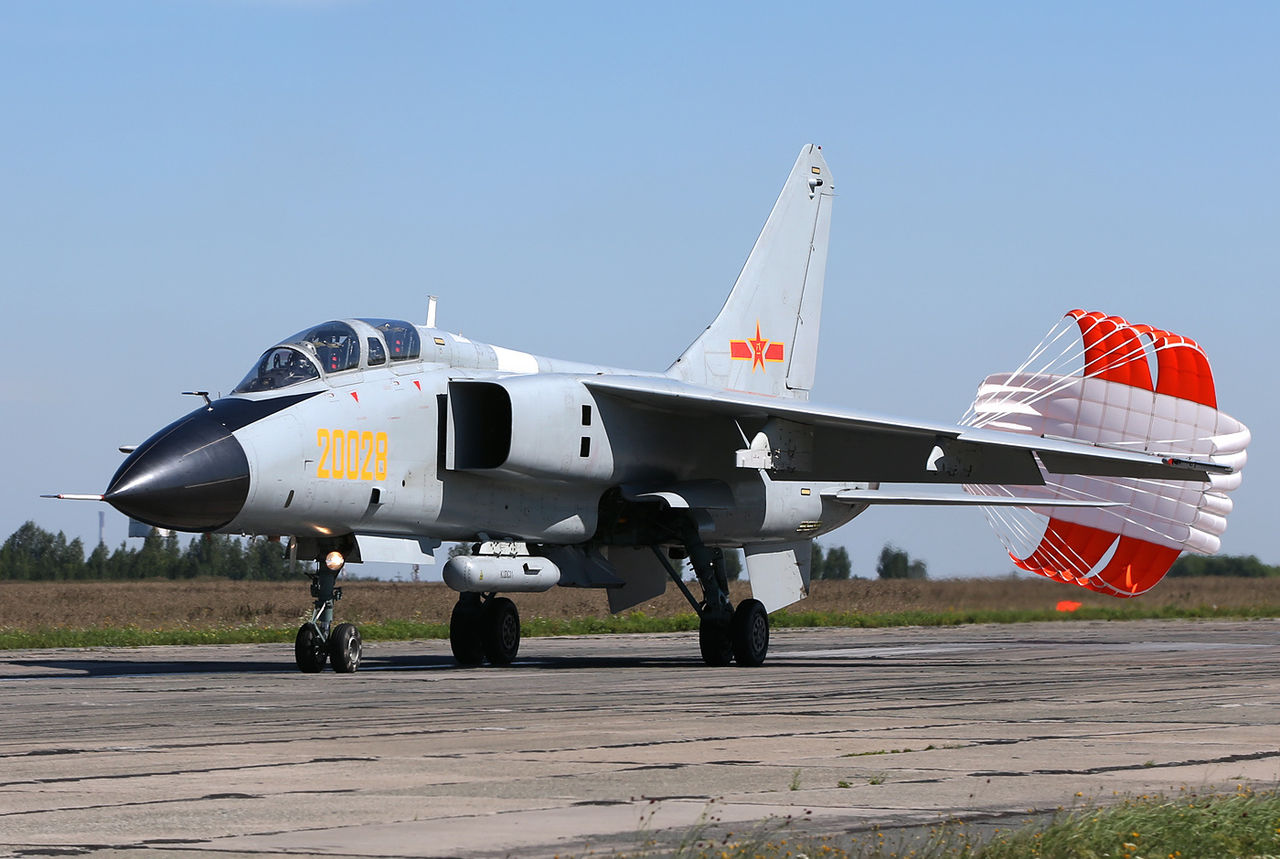Displaying a formidable show of force near Taiwan, China deployed a group of JH-7 fighter bombers, accompanied by drones, advanced fighter jets, and other aircraft, effectively encircling the self-governing island.
On August 26, Taiwan’s defense ministry announced that over the past 24 hours, they had identified 32 aircraft from the People’s Liberation Army (PLA) and nine Chinese navy vessels.
Among these aircraft, 20 aircraft engaged in actions that involved either crossing the median line of the Taiwan Strait or violating Taiwan’s designated air defense identification zone.
The MoD said that in response, Taiwan promptly mobilized its fleet of aircraft, naval vessels, and advanced missile systems to monitor these activities.
The People’s Liberation Army dispatched four JH-7 Flying Leopard aircraft near Taiwan. China’s Xian Aircraft Industry Corporation designed and developed this twin-engine, two-seat fighter bomber.
32 PLA aircraft and 9 PLAN vessels around Taiwan were detected by 6 a.m.(UTC+8) today. R.O.C. Armed Forces have monitored the situation and tasked CAP aircraft, Navy vessels, and land-based missile systems to respond these activities. pic.twitter.com/XtR9WMT2tV
— 國防部 Ministry of National Defense, R.O.C. 🇹🇼 (@MoNDefense) August 26, 2023
The aircraft, with its roots in the 1980s, has undergone a series of evolutionary stages and enhancements that have culminated in the contemporary platform it stands as today.
While its core focus remains ground attack missions, the JH-7 has evolved to encompass various functions, including anti-ship warfare, interdiction, and close air support, highlighting its versatility.
Meanwhile, according to Taiwan’s defense ministry, the Chinese military deployed aircraft also included Su-30 and J-10 fighters, in addition to anti-submarine aircraft.
Apart from those aircraft, Chinese drones conducted long-range flights. One of these drones, named TB-001 or “twin-tailed scorpion,” flew from northern Taiwan out into the Pacific, closely following the island’s east coast, and then returned to China using the same path, as shown on a map.

Earlier this week, the Taiwanese MoD stated that it could not determine whether the exercises initiated by China on August 19 had officially concluded, as Beijing had not made any official announcement regarding their conclusion.
Nathan Ruser, a researcher at ASPI’s International Cyber Policy Centre (ICPC), noted, “There is a deeply unhelpful trend to suggest an invasion of Taiwan is either imminent or so unlikely that it can be dismissed. These are both wildly wrong, and this update exemplifies that. Both intense vigilance/deterrence and careful work to de-escalate are necessary.”
China’s Flying Leopards
China’s JH-7 aircraft are relatively older aircraft models. The country has made significant strides in recent years to upgrade its Air Force, preparing for potential engagements in the region, particularly with the United States.
However, China has continued to allocate resources to advance the Flying Leopards. In 2021, China’s People’s Liberation Army (PLA) displayed the modern iteration of the JH-7 fighter bomber, labeled as the JH-7A2, during the Zhuhai airshow.
This version includes enhancements in terms of surface attack capabilities, incorporating features such as standoff weapons, laser-guided bombs (LBG), and munition dispensers.
The prevailing belief is that strategic bombers on their own might not be adequate for China if it opts to invade the self-governing island.
Such a complex maneuver would necessitate a more comprehensive military strategy, with the JH-7 aircraft expected to play a pivotal role in such an operation.
Amid this, a notable concern arises that the older generation Chinese military aircraft, like the JH-7, may lack the capability to effectively handle the increasing security challenges in the areas surrounding the country.
This concern drives the Chinese military’s decision to phase out its aging fighters and introduce advanced J-16 multi-role jets instead.
Chinese experts believe that the JH-7 will remain a part of the PLA’s arsenal, operating in conjunction with the J-16 multi-role fighter jet.
Despite its utilization of an older airframe, the JH-7 stands as a highly effective aircraft for conducting deep strike operations, which could be crucial in the context of a Taiwan invasion.
Out of the total 270 JH-7s built, approximately 215 to 240 JH-7As are presently operational, divided evenly between the PLA Naval Air Force and the PLA Air Force. These jets have frequently participated in international joint exercises alongside allied air forces, including Russia.
Initially conceived for a high-speed fighter, the design was adapted into a fast-anti-ship fighter bomber, leading to its “JH” designation. It featured a tandem seating arrangement for a pilot and weapons systems officer.
This aircraft, China’s first to be developed using computer software, resembled a larger version of the European Tornado and Jaguar attack jets.
With its extended combat range and substantial payload capacity, the JH-7 provides Beijing with an offensive capability tailored for potential actions against Taiwan.
Moreover, its capacity to carry long-range anti-ship missiles, deployable from distances exceeding 100 miles, empowers the JH-7 to execute an asymmetric “hit and run” strategy, evading enemy air defenses before they can effectively respond.
- Contact the author at ashishmichel(at)gmail.com
- Follow EurAsian Times on Google News